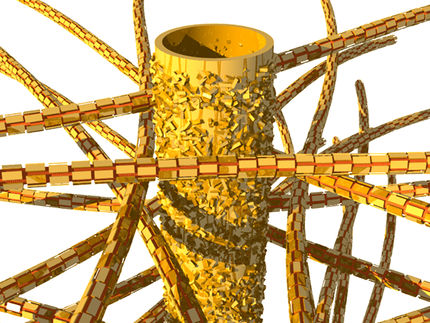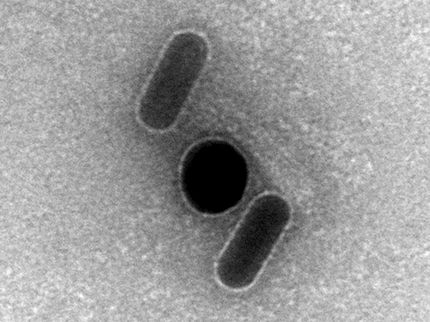Rice scientists unveil 'nanoegg'
Asymmetric particles focus light in unique way
Advertisement
Contact: Jade BoydResearchers at rice University's Laboratory for nanophotonics (LANP) have unveiled the "nanoegg," the latest addition to their family ultrasmall, light-focusing particles. A cousin of the versatile nanoshell, nanoeggs are asymmetric specks of matter whose striking optical properties can be harnessed for molecular imaging, medical diagnostics, chemical sensing and more.
Like nanoshells, nanoeggs are about 20 times smaller than a red blood cell, and they can be tuned to focus light on small regions of space. But each nanoegg interacts with more light - about five times the number of wavelengths - than their nanoshell cousins, and their asymmetric structure also allows them to focus more energy on a particular spot.
"The field of nanophotonics is undergoing explosive growth, as researchers gain greater and greater sophistication in the design and manipulation of light-active nanostructures," said LANP Director Naomi Halas, the Stanley C. Moore Professor of Electrical and Computer Engineering and professor of chemistry. "The addition of nanoeggs and, earlier this year, nanorice to LANP's family of optical nanoparticles is a direct result of our increased understanding of the interaction between light and matter in this critical size regime."
Like nanoshells, nanoeggs have a spherical, non-conducting core that's covered with a thin metal shell. But where the casing on a nanoshell has a uniform thickness - like the peel covering an orange - the nanoegg's covering is thicker on one side than the other - in much the same way that a hard-boiled egg white is thick in some places and thin in others.
The off-center core in the nanoegg radically changes its electrical properties, said co-author and theoretical physicist Peter Nordlander, professor of physics and astronomy. The reasons for this have to do with the odd and often counterintuitive rules that govern how light interacts with electrons at the nanoscale.
"All metal particles have a sea of free electrons flowing continuously over their surface called plasmons," Nordlander said. "These plasmons slosh around constantly, just like waves in the ocean. Light also travels in waves, and when the wavelength of incoming light matches the wavelength of the plasmon, the amplitude of their sloshing gets bigger and bigger, much like the waves in a bathtub when a child rhythmically sloshes bathwater until it spills out of the tub."
In order for plasmons to be excited by light, the electrons on a particle's surface must behave in such a way as to create a 'dipole moment,' a state marked by two equal but opposite poles, one positive and the other negative - much like a magnet that attracts on one end and repels on the other.
"Without a dipole moment, there is no 'handle' for light to grab hold of," Nordlander said. "In symmetric nanoshells, most of the light energy is lost to these 'dark modes.' With symmetry breaking, we are able to make these dark modes bright by providing dipole moments for more of the incoming light."
Original publication: Proceedings of the National Academy of Sciences 2006.



















































